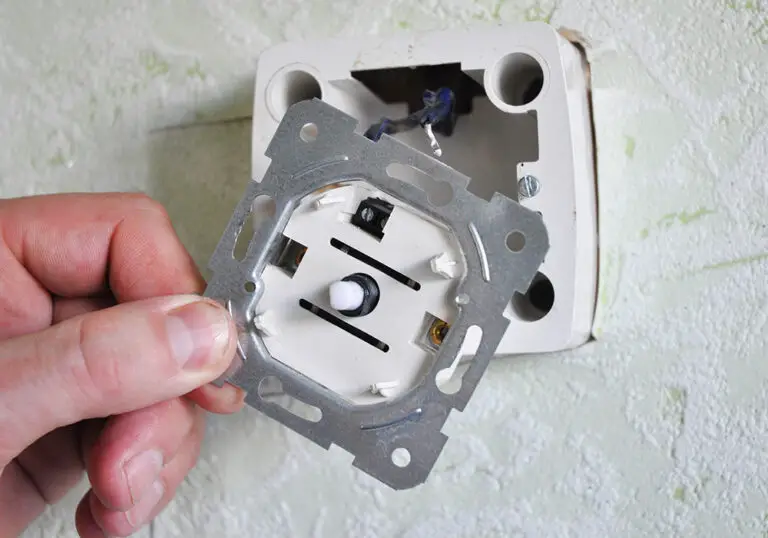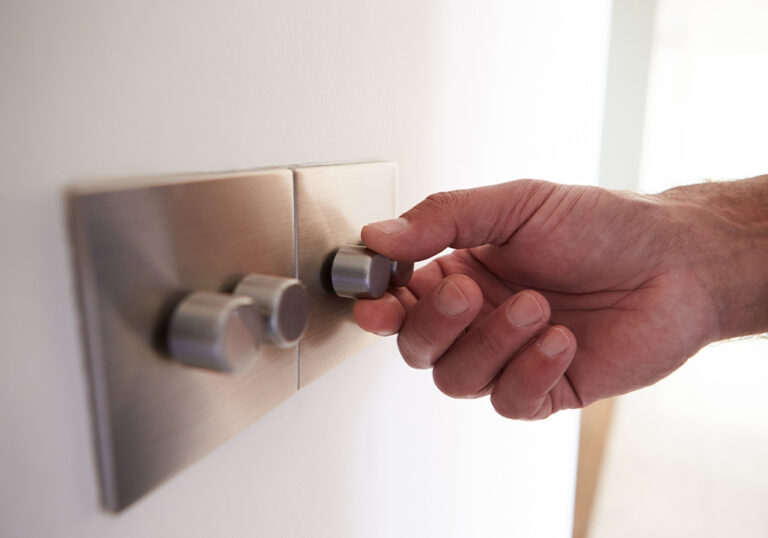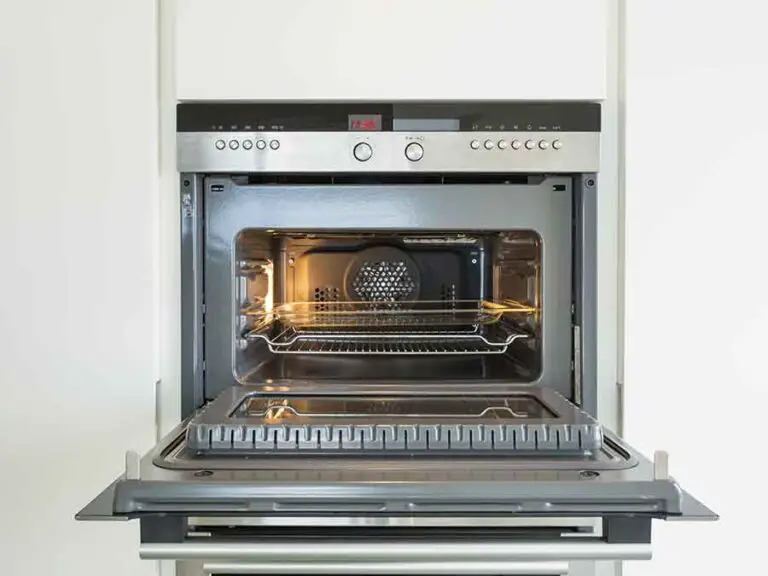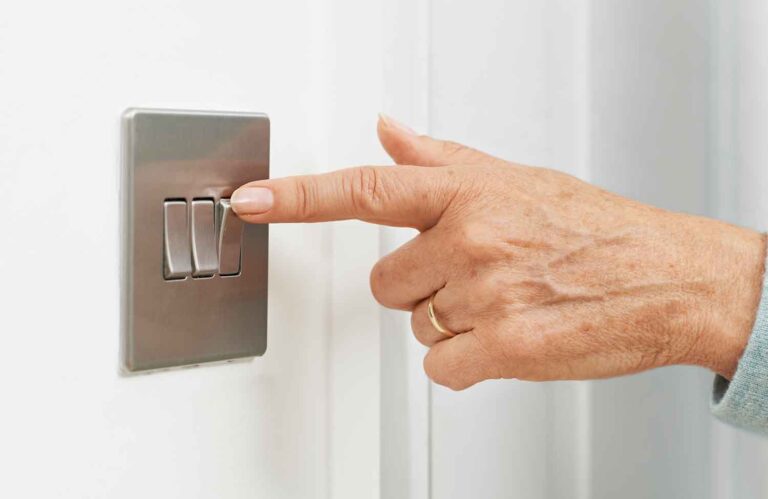Is Leaving A Light Switch In The Middle Safe?
Have you ever wondered if leaving a light switch in the middle position is safe? This common concern often arises, especially among individuals who are attentive to their home’s electrical safety. To address this question, it’s important to have a clear understanding of how light switches work and whether the middle position could pose any potential risk.
Light switches are designed with an internal mechanism that prevents them from staying in the middle position. As you toggle the switch, its internal components snap past the center, ensuring that the switch is either fully on or off, regardless of the plastic outer’s appearance. However, if a switch is damaged, leaving it in the middle position could potentially lead to a hazard. It’s crucial to know when to consult a professional and take necessary precautions to ensure the safety and proper functioning of your home’s electrical system.
Key Takeaways
- Light switches are designed to be fully on or off, and the middle position is not a potential risk unless the switch is damaged.
- Understanding electrical circuits and potential hazards is essential to maintaining a safe home environment.
- Consult a professional and follow practical precautions to minimise any risks associated with light switches and electrical systems.
Understanding Light Switches
A light switch is a simple device that allows you to control the flow of electrical current to a light fixture. To understand its safety when left in a middle position, it’s essential to know that the internal switch is a binary device, which means it can either be open (off) or closed (on).
When you flip a light switch, the connections inside the switch either complete or break the circuit, subsequently, turning the light on or off. The switch itself is designed to operate in a safe and controlled manner. So when considering its position in the middle, it’s important to know that doing so doesn’t actually change the switch’s inherent properties.
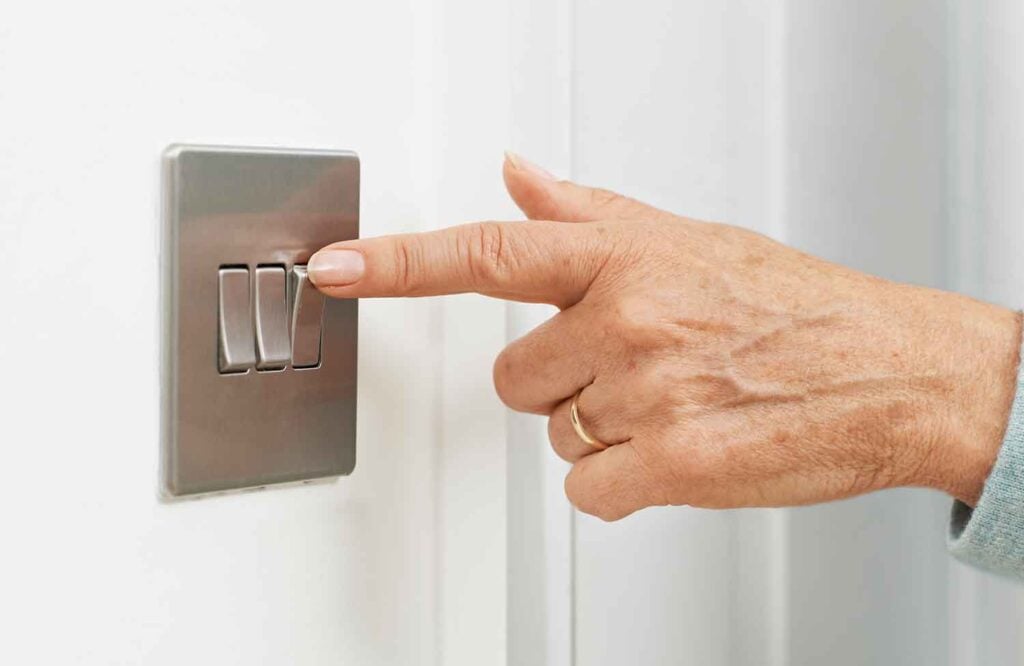
In most cases, leaving a light switch in the middle is completely safe. The binary nature of the device means it’s either open or closed, regardless of its position. So, even if it appears to be in between on and off, the internal switch is still either fully open or fully closed.
Nevertheless, it’s a good habit to ensure that light switches are firmly in the on or off position. This not only avoids confusion but also ensures that electricity is not wasted if a light is accidentally left on.
The Middle Position of A Light Switch
In some instances, you may find yourself accidentally leaving a light switch in a middle position, between the on and off states. With the common concern of accidental fires or electrical issues, you might wonder whether leaving a light switch in the middle is safe.
Firstly, it’s essential to understand that a light switch is a binary device, meaning it operates in two possible states – open or closed. When a switch is in the middle position, it is still in an open or closed state. Hence, the light will either be on or off, there will not be an increase in the chances of a short circuit nor, consequently, a higher chance of fire.
Technically, a well-functioning light switch should return to its proper position; however, some older or worn-out switches may fall to the off position by themselves. In these cases, it is best to replace the switch to ensure its proper function and avoid any potential issues.
In summary, leaving a light switch in the middle position will generally not create any safety hazards. It is, however, essential to inspect your light switches regularly and handle any maintenance or replacements to keep your electrical system in good working order.
Potential Risks and Safety
When discussing electrical safety, it is important to understand the risks associated with leaving a light switch in the middle position. Although it may seem like an innocuous action, there are potential hazards if a switch is left in this position.
One possible issue that might arise is the creation of an incomplete or inconsistent connection, causing your electrical circuit to become unstable. This could lead to sparking, which poses a considerable fire risk. In addition, an unstable electrical connection may cause a short-circuit, further increasing the danger to your property.
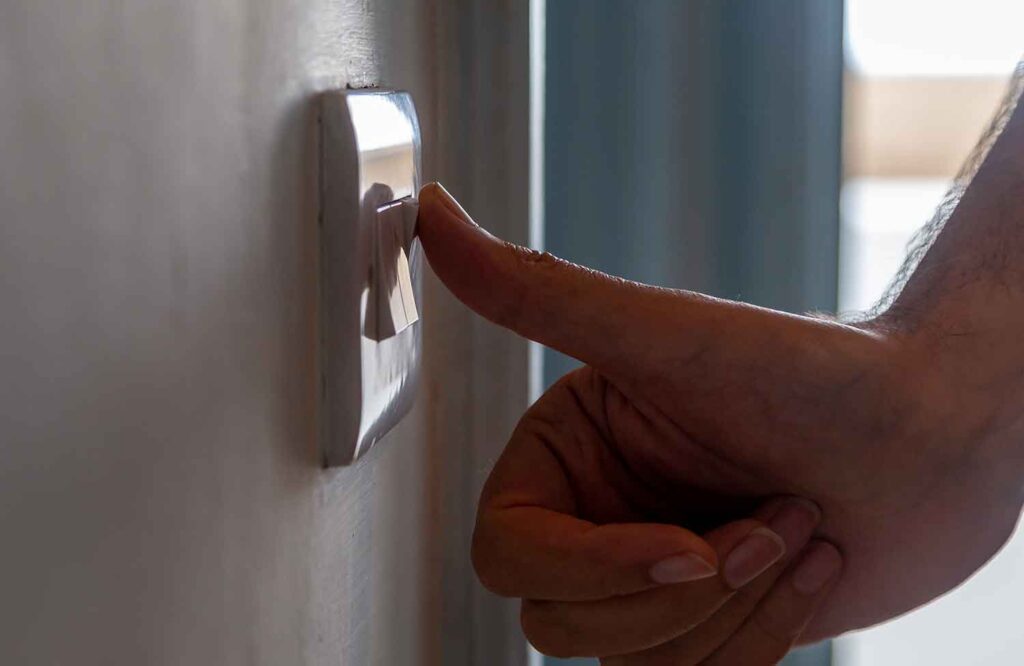
Moreover, leaving a light switch in the middle position can lead to excessive energy consumption. This, in turn, can result in high energy bills and, ironically, could also be a potential fire hazard in the long run. Therefore, it is essential to ensure that your light switch operates in a binary manner, i.e., it is either switched on or off completely.
From a safety perspective, the wisest course of action is to address the issue of a light switch that remains in the middle. If you’re unsure about your electrical installation or suspect any issues with your switches, it is advisable to consult a competent electrician who can inspect and test your installation.
In summary, leaving a light switch in the middle position might pose various risks, with fire hazards being the most prominent one. To maintain a safe environment, it is crucial to ensure that your electrical systems work properly and efficiently. So, be proactive and address any electrical issues that may arise to guarantee the safety of both you and your property.
Exploring Electrical Circuits
When working with electrical circuits, it’s important to understand how they operate. In a basic electrical circuit, you’ll typically find a power source, a switch, and a load (such as a light bulb). When the switch is ‘on’, it connects the circuit and allows the current to flow through it, thus powering the load. When the switch is ‘off’, it breaks the circuit and prevents the flow of current, turning off the load.
Now, you might be wondering what happens when a light switch is left in the middle position. In general, a light switch is designed to work in either the ‘on’ or ‘off’ position. However, some switches may momentarily hold a middle position if they are not flicked firmly enough. In most cases, the switch will eventually settle into either the ‘on’ or ‘off’ position, as it is not designed to stay in the middle.
It is important to note that leaving a light switch in the middle position can create an unsafe or unreliable connection. If a switch is in this position, the circuit might be partially connected, leading to arcing or increased resistance. This can generate excessive heat, potentially causing damage to the switch or even lead to a fire.
To prevent any risks associated with a light switch in the middle position, it’s best practice to always ensure your light switches are firmly switched ‘on’ or ‘off’. Proper use and maintenance of the electrical systems in your home are vital in ensuring safety and efficiency. Always consult a qualified electrician for any concerns or issues with your electrical system.
Remember to be cautious and responsible when dealing with electricity. Be attentive to your surroundings, and always follow safety guidelines to prevent any possible hazards.
Common Myths About Light Switches
Myth 1: Leaving a light switch in the middle position is dangerous. Contrary to popular belief, having a light switch in a middle or between on and off positions usually is not unsafe or dangerous. Light switches are designed to be either on or off, and when the circuit is interrupted by placing the switch in a middle position, it essentially functions as an off position.
Myth 2: Switching lights on and off frequently shortens the lifespan of bulbs. While it is true that turning on a light does cause a small surge in energy, the act of frequently turning lights on and off does not significantly reduce the lifespan of modern bulbs. LED bulbs, in particular, are designed for long-lasting use and can withstand frequent switching.
Myth 3: Leaving lights on for a longer duration is more energy-efficient. Some people believe that leaving lights on for an extended period is more energy-efficient than turning them off when not in use. However, this is false. To save energy, it is always better to switch off lights when they are not needed.
Myth 4: All light switches can handle any type of light bulb. Not all light switches are created equal. Some switches, such as dimmer switches, may not be compatible with certain types of bulbs like CFLs and LEDs. Always check the compatibility of your switches and bulbs before installation.
Remember, it is essential to exercise caution when working with electrical components. Always check the circuit for live current before working on it. If you are unsure of how to safely handle electrical work, consult a certified electrician.
Practical Precautions
When it comes to light switches, there are standard two-position switches where leaving them “in the middle” could be a potential safety concern. To address this issue and maintain safety in your home or workplace, consider taking the following practical precautions:
- Regularly inspect switches: Keep an eye out for any signs of wear or damage in the light switches. This includes discolouration, cracks, or looseness. If you notice any of these, consider replacing the switch as soon as possible.
- Ensure proper installation: When installing new light switches or replacing old ones, make sure that they are installed correctly. This ensures that the contacts within the switch can properly make and break the electric circuit, minimising the chances of leaving a switch in a middle position unintentionally.
- Educate household members or coworkers: It’s important that everyone using the light switches in the space is aware of the potential risks associated with leaving a switch in the middle position. Make sure they understand how to correctly operate the switches and are aware of the safety precautions.
- Consider alternative switch types: If you find that standard two-position light switches are not suitable for your needs, consider using alternative switch types, such as three-state switches with a designated off position in the middle. These switches can help eliminate the risk posed by leaving a switch in the middle position.
- Maintain electrical safety: Regularly check and maintain the electrical installations in your home or workplace. This includes monitoring the condition of plug sockets and wiring. Performing a risk assessment and adhering to established safe working practices will also help ensure that you and others remain safe around electrical equipment.
By taking these practical precautions, you can reduce the chances of leaving a light switch in the middle position and maintain a safe environment in your home or workplace.
Professional Perspective
As a responsible individual, it’s natural for you to consider the safety aspect of leaving a light switch in the middle position. Generally, light switches are designed with a straightforward operation, being either ‘on’ or ‘off’. When they’re on, the switch connects the circuit, allowing the current to flow. Conversely, when they’re off, the switch breaks the circuit, and no current can pass through.
There may be cases where a light switch is stuck in a middle position, neither completely on nor off. This could lead to some confusion regarding the actual state of the circuit. Usually, it doesn’t pose imminent danger; however, it’s a sign of a faulty switch that might need replacement or repair. In some rare situations, it may lead to short-circuiting if the switch is damaged or improperly installed.
If you notice a light switch in your home or workplace stuck in the middle position, it’s wise to take some steps in order to ensure safety:
- First, avoid touching the switch with wet hands or using metal objects to manipulate it, as this could increase the risk of electrical shock.
- Test the circuit by operating the connected lights or appliances to see if the switch functions effectively.
- If the lights remain on or flicker erratically when the switch is in the middle position, it’s best to turn off the switch and contact a qualified electrician to inspect and repair the problem.
Remember, while most modern electrical systems are designed to be safe, it’s always better to err on the side of caution. Keep an eye on the switches in your home or workplace, and if you notice any signs of malfunction, consult a qualified electrician to address the issue accordingly. By doing so, you can ensure that any malfunctioning switches are promptly addressed and the safety of everyone in the vicinity is maintained.
Legislation and Compliance
The safety of electrical installations, including light switches, in the UK is regulated by various laws and guidelines. One of the key legislations governing electrical safety is the Electricity at Work Regulations 1989. These regulations apply to electrical systems, equipment and conductors to ensure they are designed, installed and maintained safely.
Another important legislation is the Electrical Equipment (Safety) Regulations 2016. This regulation sets specific safety requirements for electrical equipment operating within certain voltage ranges (50-1,000 volts for alternating current and 75-1,500 volts for direct current). Manufacturers, importers, and distributors of electrical equipment must comply with these safety standards to reduce the risk of accidents and potential harm to users.
Lighting Regulations, introduced in September 2021, help to improve lighting standards by establishing minimum energy efficiency requirements in the industry. While the main focus is on energy efficiency, these regulations also contribute indirectly to the overall safety of lighting systems and related equipment.
To ensure compliance with the relevant regulations and maintain safety in your environment, always follow the recommendations of a competent electrician or an industry-standard organisation, such as Electrical Safety First. Consider using electrical socket testers to identify wiring faults, but be aware that some socket testers may not be able to detect certain types of faults.
In conclusion, leaving a light switch in the middle position can pose safety risks, especially if the switch is damaged or improperly installed. To maintain compliance with the UK legislation and prioritise safety, it is vital to address any potential issues or concerns promptly with the help of a qualified electrician. Always follow best practices for using and maintaining electrical equipment to minimise risk and ensure a safe environment.

